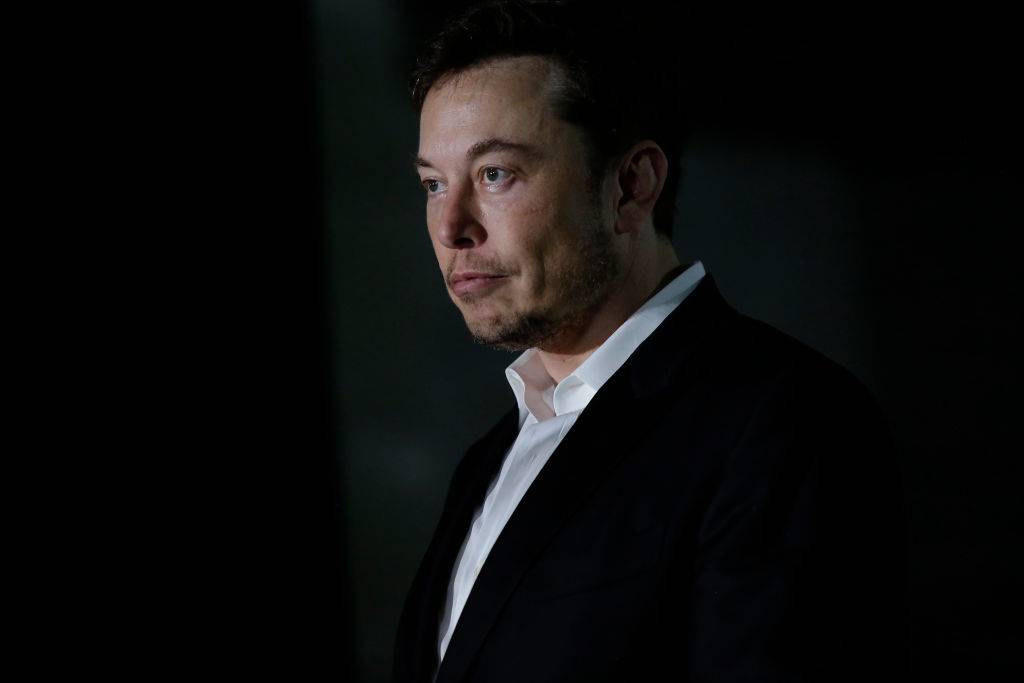Inside The 2018 Scramble to Avoid the Collapse of Tesla
Musk promised a quarterly profit with the Model 3, but getting cars to customers in time wasn’t easy.
“Is Vegas on the line?” Elon Musk asked on one of his nightly calls with his sales staff in September of 2018.
Las Vegas was. Cayle Hunter, just nine months into his job overseeing a Tesla Inc. sales team from an office not far from the Strip, waited eagerly for Mr. Musk’s next question.
“How many people did you sign up for pickup today?” asked Mr. Musk.
This was Mr. Hunter’s big moment: His team had scheduled 1,700 people to pick up their Model 3s in the coming days—a record—and he was proud to announce the achievement. The compact Model 3 was Mr. Musk’s bet-the-company shot at transforming Tesla into a mainstream automaker and ushering in a new era of electric vehicles—and at that moment, Tesla needed to move thousands of them to stay afloat.
Mr. Hunter had set a record, but Mr. Musk wasn’t happy. The Tesla chief executive ordered Mr. Hunter to more than double the number the next day or else he’d personally take over.
There was more. Mr. Musk said he’d heard that Mr. Hunter’s team had been relying on phone calls to schedule car pickups. That stopped now. Nobody likes talking on the phone, Mr. Musk said; it takes up too much time. Text customers instead. That would be faster. If he heard about any calls being made the next day, Mr. Hunter was fired.
Mr. Hunter’s wife and children had only recently joined him in Las Vegas; they had just finished unpacking their boxes. Now Mr. Musk was threatening to fire him if he didn’t do the impossible in 24 hours.
Tesla was 15 years old, and it was running out of time and money.
Founded in 2003, the company aimed to make electric vehicles mainstream, first by showing that EVs could be cool with the Roadster sports car, then better than a gas-powered car with the Model S luxury sedan, followed by the mass-market Model 3. The cars’ quick acceleration and sexy looks put the company on the map, and Mr. Musk’s antics kept it in the news. For most of the year, Mr. Musk’s attention had been focused on the company’s lone U.S. assembly plant in Fremont, Calif., where Tesla struggled to ramp production of its latest offering, the Model 3. Building that car had proven much harder than he’d expected, resulting in a would-he or-wouldn’t-he drama to reach a weekly production level of 5,000 Model 3 cars—the volume at which, Mr. Musk said, he’d have enough vehicles to sell to make the company sustainable. Problem after problem resulted in money-eating delays that left the company and its employees badly shaken. Mr. Musk had dubbed it “Manufacturing Hell.”
But now, with the production headaches mostly solved, Mr. Musk faced the fresh challenge of getting those newly built cars into the hands of paying customers. Their money would give Tesla another day to fight.
Manufacturing Hell hadn’t been a secret. At times that year, it seemed as if the whole world was watching the company—with some critics and enemies on Wall Street and Twitter openly rooting for Mr. Musk to fail. However, this account, based on interviews with former Tesla employees, is about the weeks in 2018 that came after—and came to be known inside Tesla as “Delivery Hell.”
It is adapted from the book “Power Play: Tesla, Elon Musk, and the Bet of the Century.” Offered numerous opportunities to comment on specific details, anecdotes and characterisations in the book—including those in this excerpt—Mr. Musk responded: “Most, but not all, of what you read in this book is nonsense.” Mr. Musk didn’t elaborate and didn’t respond to additional requests for comment on this excerpt.
Cash Crunch
Personally and professionally, Mr. Musk was in tatters that September. Many of his most trusted deputies were long gone, including top sales and delivery executives who had futilely tried to avoid the very situation Mr. Musk now found himself in. He also faced the real threat of being booted from the company for what the U.S. Securities and Exchange Commission was calling a fraud against investors when weeks earlier he claimed to have funding lined up to take Tesla private.
The August announcement—via Mr. Musk’s preferred communication tool, Twitter—had roiled the stock when it became clear he didn’t, in fact, have all of his ducks in a row for such a deal. He ultimately scuttled the idea, but not before the SEC began investigating, eventually filing a lawsuit against Tesla and Mr. Musk that alleged he had misled investors and sought to remove him as CEO.
But none of that would matter if Mr. Musk couldn’t turn things around in the next three weeks when the third quarter ended. He had promised a profit. And he was intent on doing so.
By August, Tesla’s cash on hand had fallen to $1.69 billion—barely enough for the company to function. Internally, Mr. Musk was pushing the team to deliver 100,000 vehicles in the third quarter—roughly as many as the company had sold in all of 2017. It wasn’t clear if the Fremont factory could even make such an amount, especially as it struggled to pump out vehicles free of defects.
Mr. Musk’s plan counted on the company delivering almost 60% of its vehicles in the final weeks of September. Those destined for shipment to the East Coast would be manufactured earlier in the quarter, to accommodate their longer delivery times. West Coast cars would be made only after those bound for faraway markets. Both would be coordinated to land just before quarter’s end, so they could be tallied toward that period’s earnings. The process was known internally by some as “the wave,” for how it spread cars out to customers all at once. But this time, its scale had grown so large, so quickly that a big wave threatened to crush the company.
‘Wow’
The sales organisation didn’t have hundreds of company cellphones that Mr. Hunter’s sales team could use to send text messages, as Mr. Musk demanded, and they didn’t want their employees using their own personal phones.
Overnight, Mr. Hunter and other managers pieced together a solution, employing software that allowed his team to text from their computers. They stopped the practice of walking customers through the reams of sales paperwork that would eventually need to be completed and signed. If Mr. Musk’s goal was to have people in a queue to pick up their cars, then that’s what they would do. They’d just start assigning pickup times for customers: Can you come in at 4 p.m. on Friday to get your new Model 3?
Often, Mr. Hunter didn’t even wait for any response before putting a customer on the list for pickup. If the customer couldn’t make it, she might be told she would lose her spot in line for a car that quarter. Customers became more motivated to complete the tedious paperwork needed to complete a sale when there was a Model 3 dangled in front of them. Mr. Hunter’s team began telling customers to have it all completed 48 hours before delivery.
The team raced through their list of customers, assigning times at pickup centres around the U.S. By 6 p.m. the next day, they had reached 5,000 appointments. Mr. Hunter gathered the team to thank them for their work. He fought back tears. He hadn’t told them that his job was on the line; all they knew was that it was super-important to schedule a bunch of deliveries. That night on the call, Mr. Hunter reported the results to Mr. Musk.
“Wow,” Mr. Musk said.
It was a major breakthrough, one that some senior managers point to as a defining moment for the quarter. But there was little time for celebration. They moved on to the next fire.
Instead of building out delivery centres that would perform some of the traditional car-dealer functions, Mr. Musk pushed to deliver vehicles directly to customer homes and offices—skipping the brick-and-mortar choke point all together. Mr. Musk wanted 20,000 cars in the third quarter delivered directly. In theory, it would save money on having to expand delivery centres; in practice it would require an army of people to physically take the vehicles to customers. There was no way Tesla was ready yet to do 20,000 home deliveries. Still, managers leaned on staff who had worked at Amazon.com Inc. and Uber Technologies Inc. for their expertise in tracking packages and hiring gig workers.
An initial plan to design special Tesla-branded car carriers was scrapped because it would have been too costly and time consuming. Instead, employees and contractors simply drove the cars to buyers’ homes and handed over the keys. Tesla’s drivers would return to the office by calling an Uber or Lyft. Some of the drivers saved time by summoning a car ahead of their arrival at a customer’s door—a ploy that occasionally went amiss when an Uber driver arrived before the Tesla delivery.
As they pushed toward the end of the quarter, it became clear that the team had failed to anticipate how many trucks it would require to deliver an ever-increasing volume of cars to delivery centres that would then distribute them to customers. Third-party car carriers didn’t have enough space for them. Managers, with little automotive industry experience, had just assumed they could keep upping and upping their shipments as cars rolled off the line.
During one nightly call, a manager who had recently been hired as head of customer experience and operations spoke up. She’d spent years overseeing supply chains for the Army National Guard and joined Tesla from Walmart Inc. She was deeply experienced in operations, and looking at the numbers, she had bad news for Mr. Musk: The company couldn’t meet his goal of 100,000 deliveries this quarter. They were on pace for around 80,000.
Mr. Musk didn’t accept that. He said he needed those deliveries to occur. Within days the manager was ousted. Mr. Musk told the nightly conference call of sales leaders that it wasn’t because she wasn’t enough of a sycophant, but was rather about her “fundamental inability to perform.” In reality, she had given him an answer he didn’t want to hear. He wanted to hear: We’ll do our best. The managers had been conditioned against telling him the unvarnished truth.
On another occasion, one senior sales manager had had enough. After almost two years with the company, he gave notice that he was quitting. News of the decision found its way to then-Chief Financial Officer Deepak Ahuja, who didn’t want to lose the promising manager and began trying to keep him in the fold. Mr. Musk, however, had the opposite reaction: rage.
At the Fremont delivery centre, he approached the manager, screaming profanities as he towered over him, telling him to leave. “I don’t want anyone here who is going to quit on me during a time as important as now,” Mr. Musk yelled, according to a person who watched.
Mr. Musk followed the manager into the parking lot. The scene was ugly and public enough that the board ultimately investigated, amid accusations that Mr. Musk had physically pushed the manager. (Months later, the board issued a statement to Bloomberg News saying there was no physical altercation. Board Chairman Robyn Denholm didn’t respond to a request for comment.)
Help wanted
As the clock ticked down to the end of September and Tesla’s outrageous sales goal seemed out of reach, Mr. Musk turned to Twitter to make an unusual request to his loyal customers: Help us deliver vehicles.
Longtime owners showed up at stores around the country. They focused on showing customers how to operate their new cars, and explained life with an electric vehicle, freeing up paid staff to handle the overflow of paperwork. Mr. Musk and his new girlfriend, pop musician Grimes, worked at the Fremont delivery center, joined by board member Antonio Gracias. Mr. Musk’s brother, Kimbal, also a member of the board, showed up at a store in Colorado. It was truly an all-hands-on-deck moment. Surrounded by friends and kin, Musk seemed at his happiest, one manager recalled: “It was like a big family event…. He likes that—he likes loyalty.”
The company was ready to tabulate the quarter’s final delivery results. It was close. Deliveries reached 83,500—a record that exceeded Wall Street’s expectations but that was more than 15% shy of the internal goal of 100,000. (It was also uncannily close to the estimate by the head of customer experience, who had seemingly been ousted for suggesting it.) Almost 12,000 vehicles were still en route to customers, missing the deadline for the third quarter.
While short of Musk’s goal, it was still an enormous achievement. It was also enough to push the company to a quarterly profit of $312 million—in part because many of those cars were the high-priced ones that Mr. Hunter’s team had been told to push. It was the largest quarterly profit the company had ever made up to that point, and it came as a surprise to many on Wall Street who had been predicting a loss. In the final days of the quarter, Mr. Musk also settled with the SEC in a deal that allowed him to stay on as CEO, with limits on how he could use Twitter.
More than eight years since Tesla had gone public, investors could finally enjoy blue skies—or so Mr. Musk told them. In actuality, it wouldn’t prove so easy. By January 2019, Mr. Musk was focused on delivering the higher-margin versions of the Model 3s to early customers in Europe and Asia while racing to slash costs in the U.S. Among the many layoffs was Mr. Hunter.
Adapted from “Power Play: Tesla, Elon Musk, and the Bet of the Century,” by Wall Street Journal reporter Tim Higgins, to be published in the U.S. on Aug. 3 by Doubleday, an imprint of Knopf Doubleday Publishing Group, a division of Penguin Random House LLC, and in the U.K. on Aug. 5 by WH Allen. Copyright © 2021 by Tim Higgins.
 Copyright 2020, Dow Jones & Company, Inc. All Rights Reserved Worldwide. LEARN MORE
Copyright 2020, Dow Jones & Company, Inc. All Rights Reserved Worldwide. LEARN MORE
This stylish family home combines a classic palette and finishes with a flexible floorplan
Just 55 minutes from Sydney, make this your creative getaway located in the majestic Hawkesbury region.
Continued stagflation and cost of living pressures are causing couples to think twice about starting a family, new data has revealed, with long term impacts expected
Australia is in the midst of a ‘baby recession’ with preliminary estimates showing the number of births in 2023 fell by more than four percent to the lowest level since 2006, according to KPMG. The consultancy firm says this reflects the impact of cost-of-living pressures on the feasibility of younger Australians starting a family.
KPMG estimates that 289,100 babies were born in 2023. This compares to 300,684 babies in 2022 and 309,996 in 2021, according to the Australian Bureau of Statistics (ABS). KPMG urban economist Terry Rawnsley said weak economic growth often leads to a reduced number of births. In 2023, ABS data shows gross domestic product (GDP) fell to 1.5 percent. Despite the population growing by 2.5 percent in 2023, GDP on a per capita basis went into negative territory, down one percent over the 12 months.
“Birth rates provide insight into long-term population growth as well as the current confidence of Australian families,” said Mr Rawnsley. “We haven’t seen such a sharp drop in births in Australia since the period of economic stagflation in the 1970s, which coincided with the initial widespread adoption of the contraceptive pill.”
Mr Rawnsley said many Australian couples delayed starting a family while the pandemic played out in 2020. The number of births fell from 305,832 in 2019 to 294,369 in 2020. Then in 2021, strong employment and vast amounts of stimulus money, along with high household savings due to lockdowns, gave couples better financial means to have a baby. This led to a rebound in births.
However, the re-opening of the global economy in 2022 led to soaring inflation. By the start of 2023, the Australian consumer price index (CPI) had risen to its highest level since 1990 at 7.8 percent per annum. By that stage, the Reserve Bank had already commenced an aggressive rate-hiking strategy to fight inflation and had raised the cash rate every month between May and December 2022.
Five more rate hikes during 2023 put further pressure on couples with mortgages and put the brakes on family formation. “This combination of the pandemic and rapid economic changes explains the spike and subsequent sharp decline in birth rates we have observed over the past four years,” Mr Rawnsley said.
The impact of high costs of living on couples’ decision to have a baby is highlighted in births data for the capital cities. KPMG estimates there were 60,860 births in Sydney in 2023, down 8.6 percent from 2019. There were 56,270 births in Melbourne, down 7.3 percent. In Perth, there were 25,020 births, down 6 percent, while in Brisbane there were 30,250 births, down 4.3 percent. Canberra was the only capital city where there was no fall in the number of births in 2023 compared to 2019.
“CPI growth in Canberra has been slightly subdued compared to that in other major cities, and the economic outlook has remained strong,” Mr Rawnsley said. “This means families have not been hurting as much as those in other capital cities, and in turn, we’ve seen a stabilisation of births in the ACT.”
This stylish family home combines a classic palette and finishes with a flexible floorplan
Just 55 minutes from Sydney, make this your creative getaway located in the majestic Hawkesbury region.






















